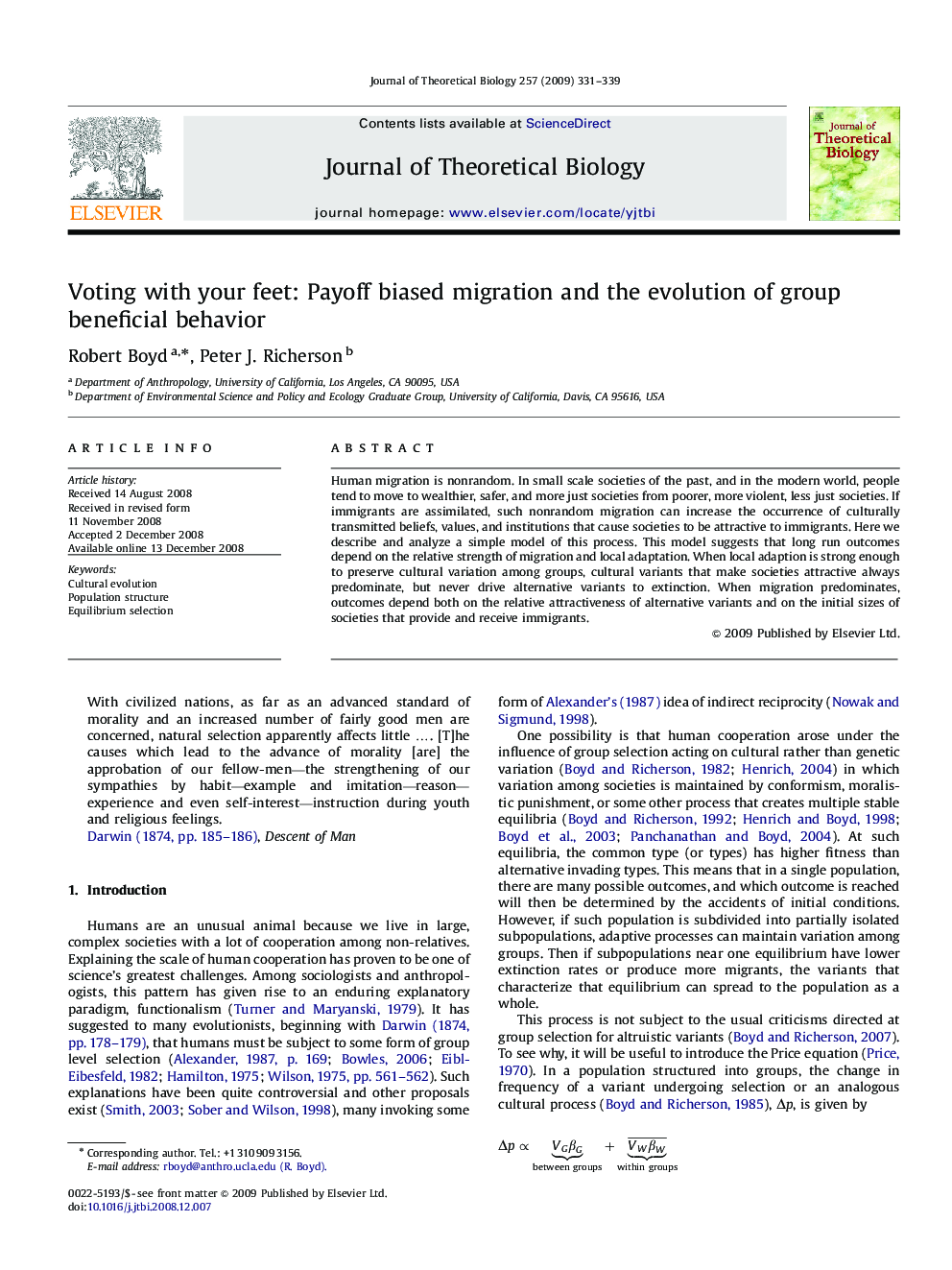| Article ID | Journal | Published Year | Pages | File Type |
|---|---|---|---|---|
| 4498407 | Journal of Theoretical Biology | 2009 | 9 Pages |
Human migration is nonrandom. In small scale societies of the past, and in the modern world, people tend to move to wealthier, safer, and more just societies from poorer, more violent, less just societies. If immigrants are assimilated, such nonrandom migration can increase the occurrence of culturally transmitted beliefs, values, and institutions that cause societies to be attractive to immigrants. Here we describe and analyze a simple model of this process. This model suggests that long run outcomes depend on the relative strength of migration and local adaptation. When local adaption is strong enough to preserve cultural variation among groups, cultural variants that make societies attractive always predominate, but never drive alternative variants to extinction. When migration predominates, outcomes depend both on the relative attractiveness of alternative variants and on the initial sizes of societies that provide and receive immigrants.
